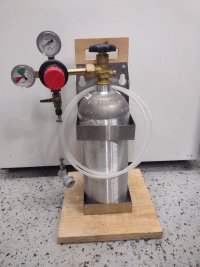redrocker652002
Well-Known Member
I have been wondering lately about the CO2 tank I am using. I put it in the kegerator as I have room to do so. It seems it runs to red very quickly, but when I keep it out while brewing my next batch to keg it seems to change the reading. I know the warm air causes the gas to expand and that will put more pressure in the tank, and that will make the reading more accurate. So, if this were your kegerator, it is a modified mini fridge so no openings for the gas line to go, would you figure out a way to store the tank outside the fridge? I am also toying with getting a bigger tank, maybe a 20 gallon, to offset and keep me from having to exchange tanks as often. Or even just having an extra tank at the ready, but the exchange place I use is literally 5 mins from my house.
On the same line of thought, how many kegs to you all get out of a 5 pound tank set at about 10 to 15 psi for most of the beers I have made so far?
As always, any input is welcome and thank you in advance for that.
Rock On!!!!!!!
On the same line of thought, how many kegs to you all get out of a 5 pound tank set at about 10 to 15 psi for most of the beers I have made so far?
As always, any input is welcome and thank you in advance for that.
Rock On!!!!!!!




